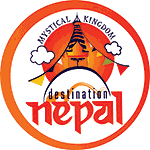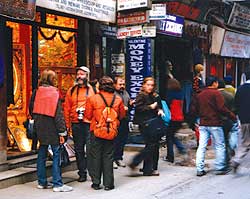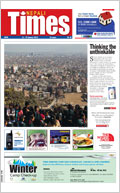 With the news of the ceasefire and the upcoming Everest 50th anniversary, Nepal's tourism industry is preparing for a spring revival this season.
With the news of the ceasefire and the upcoming Everest 50th anniversary, Nepal's tourism industry is preparing for a spring revival this season. Arrivals are already beginning to pick up, and initial figures for this month show that they are healthier than the first two weeks of February last year. The numbers are expected to grow as the main trekking and climbing season starts in March. The Nepal Tourism Board (NTB) has been preoccupied with the selection of a new CEO, but director Yogi Sakya told us, "We want to tell the world that Nepal is open for business again."
The prospect of peace has sent a wave of hope through the main trekking areas, and many lodge owners, porters, tea shop owners are keeping their fingers crossed. There is a lot of anticipation especially along the Everest trail, which will see a "Summit of Summiteers" drawing thousands of trekkers and climbers to the Khumbu in May to mark the 50th anniversary of the first ascent of Mt Everest. Nepal is also hosting a major international jazz festival in early March and the SKAL Asia meet in May.
"The ceasefire is one of the best pieces of news we have heard in a long time, and we hope tourist arrivals will improve significantly by April," says Narendra Bajracharya of the Hotel Association of Nepal. But former PATA president, Ashok Chandra Pokhrel, cautions that tourism is not an on-off switch. "People plan ahead. It takes six months or more for visitor numbers to rebound," he says.
 The only dark cloud on the horizon is the possibility of war in Iraq and tensions between India and Pakistan which will affect European and American arrivals. Although the Maoists never targeted tourists, news of fighting and political instability hit tourism hard. Controversial travel advisories issued by Western countries not being updated after the ceasefire haven't helped either. Some still caution tourists not to visit Nepal during a two-day bandh this week, even though the strike was called off 10 days ago.
The only dark cloud on the horizon is the possibility of war in Iraq and tensions between India and Pakistan which will affect European and American arrivals. Although the Maoists never targeted tourists, news of fighting and political instability hit tourism hard. Controversial travel advisories issued by Western countries not being updated after the ceasefire haven't helped either. Some still caution tourists not to visit Nepal during a two-day bandh this week, even though the strike was called off 10 days ago. Figures for arrivals last year were nearly half of totals for 1998, when half-a-million tourists visited Nepal. But things are looking up. Even before the ceasefire went into effect, arrivals by air for January 2003 were up 19 percent compared to last year, and most of the increase was in Indian tourists.
Things are looking so good that some hoteliers are even worrying that there won't be enough air seats to carry the spurt of tourists this season. They urge an open-sky policy, code-sharing with international carriers and allowing private Indian airlines.


